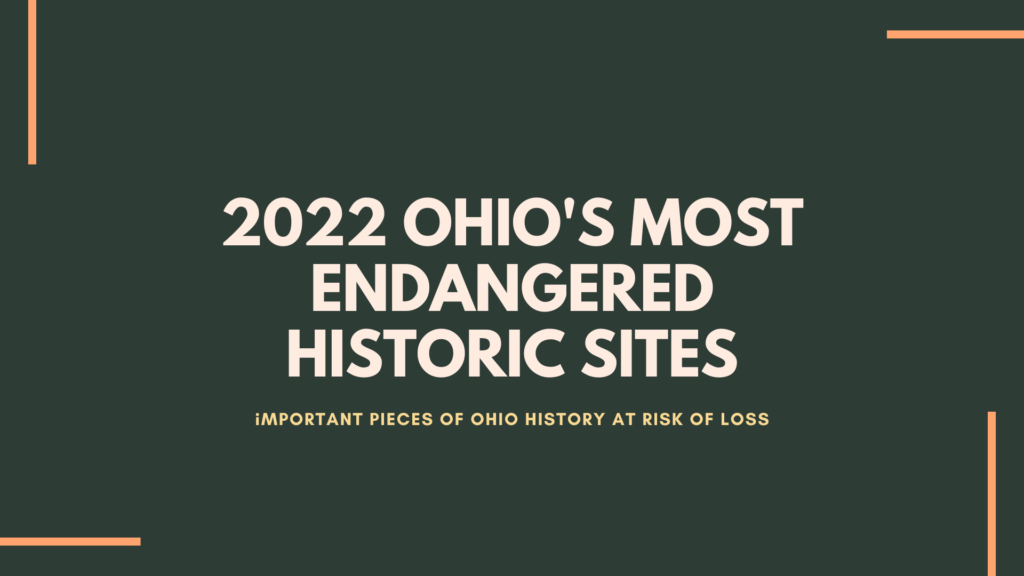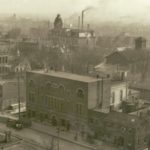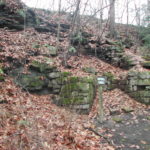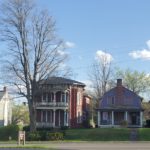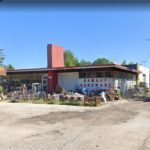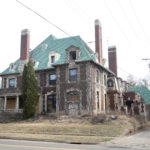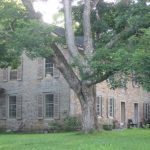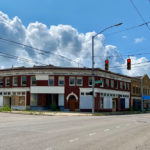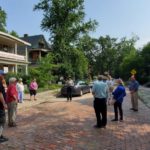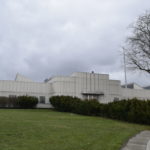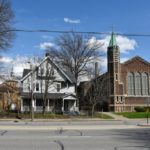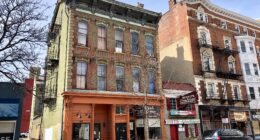Columbus, OH (May 13, 2022) – Preservation Ohio, the state’s oldest statewide historic preservation organization, has announced its official List of Ohio’s Most Endangered Historic Sites for 2022.
This year, Preservation Ohio received a large number of nominations for this important list, which confirms both that much of our state’s historic properties remain at risk and that interest in preservation is growing across the state of Ohio. Ohio’s Most Endangered Historic Sites is unique in that it highlights historic buildings and sites submitted from local citizens and advocates, each hoping to bring attention and to identify ways to give important historic properties a future. Out of the many properties nominated this year, Preservation Ohio’s board was tasked with choosing the most at risk. Thirteen properties representing all areas of Ohio are included in this years edition.
Preservation Ohio accepts nominations from any citizen or organization. Since its inception in 1993, being named to the list has contributed to saving examples of Ohio’s architectural, cultural and natural heritage. Circumstances that contribute to the endangered status and result in sites being named to the list typically include one or more of the following factors: demolition threat, abandonment, neglectful owner, deterioration, obsolete use, lack of funding for repairs, location or development.
About Preservation Ohio – Preservation Ohio is Ohio’s oldest statewide historic preservation organization, an independent, non-profit organization recognized under Section 501 (c) (3) of the Internal Revenue Code. Preservation Ohio was established in 1982 to enhance the understanding of and appreciation for Ohio’s historic resources and to serve as a focal point for Ohio organizations, municipalities, corporations and individuals who care about these resources and are concerned about preservation for future generations. For more information and updates, visit our website at www.preserveohio.com, follow us on Twitter @PreservationOH, or like us on Facebook. Preservation Ohio is celebrating its 40th Anniversary this year.
All of the information below is taken from each site’s nomination form. For previous years’ lists, click here. Click any image below for a larger view.
- IOOF Building/Old Miami County Courthouse – Troy, Miami County
The building at 112–118 W. Main Street is a 1902 three-story yellow brick commercial structure with flat parapeted roof and a two-story gabled-roof brick portion in the rear that was built 1840-41 as the Miami County Courthouse. Both properties have been identified by the Ohio Historic Preservation Office as potential contributing structures as part of a proposed, expanded historic district. The building had been under-utilized prior to a weak tornado damaging the structure in January 2020; the property has been entirely vacant since fall 2020. The threat is imminent. Two administrative bodies associated with the City of Troy have approved demolition by narrow 4-3 votes. The building’s demolition has been prevented only by a stay in Miami County Common Pleas Court while those administrative decisions are under appeal by the Troy Historic Preservation Alliance and neighboring property owners.
- Struthers Hopewell Furnace – Struthers, Mahoning County
The Hopewell Furnace is the first iron furnace west of the Allegany Mountains in Ohio. It was close to many coal mines in the area. It is located in Yellow Creek Park in Struthers. The Hopewell Furnace is the first iron furnace west of the Allegany Mountains. It started the Steel Mills in our Valley! It provided many jobs for all of the immigrants that came for work in our Steel Valley. We would like to provide a pavillion to cover and protect the furnace and picnic tables for hikers to take a rest when they hike to the historic site. We would like to see the trails rebuilt and for wood bridges to cover the creek at 3 different places for safe crossing. The City of Struthers and the Struthers Historical Society would love to save this site for future generations.
- Historic Resources of Park Avenue West – Mansfield, Richland County
The area consists of approximately eight blocks along the main street of Mansfield, Richland County. Originally known as Market Street, in the latter part of the nineteenth century, Park Avenue West was the focal point for statement residential architecture in a city with a burgeoning economy. Almost all historically significant properties on the street face challenges from neglect or inappropriate alteration. The threat is imminent as the street is nearing the tipping point of being able to reflect any semblance of its rich history. Unlike some cities of its size in the Midwest, enough remains of Park Avenue West to give a sense of what must have been a remarkable sense of place. Recently, limited reinvestment has begun and the hope is that this recognition can provide an impetus for more as well as a reason to collect rehabilitation information and resources.
- Gamauf’s Hardware – Copley, Summit County
This site is an antique store/hardware store that has been a part of Copley’s History since the 1930’s. At present it has fallen into disrepair, with the need for a new $55,000 roof.Too many sites that have value, be it historical or monetary, in this case both, are being razed and trashed. Copley is proud of its history and we can improve this site and capitalize on it, making it an asset to the community again.
- 1927 Hudson High School Building – Hudson, Summit County
The 1927 Hudson High School is located on the edge of Hudson’s National Register Historic District. The site has been a nucleus of activity since its construction, as well as a source of community pride. Sited within two blocks of Hudson’s Village Green, its location contributes to the vibrancy of the historic town. The building served as Hudson’s first high school building after the Bing Act of 1921 was passed that mandated compulsory attendance for children age 7 to 18 in Ohio. The school was designed by Miller & Son Architects from Youngstown, which constructed a wide variety of schools, churches, businesses and homes that survive today. Originally designated as “Memorial School,” it honored and commemorated Hudson’s sons and daughters who served in World War I.
- Louis Traxler Residence – Dayton, Montgomery County
The 1910-era Traxler Mansion is a grand, 10,000 square foot French Chateauesque residence designed for a downtown Dayton dry goods merchant. It joins others built by Jewish Daytonians who were not welcomed in traditional neighborhoods. Unfortunately, it is also vacant and a sizable arrears on property taxes has accumulated. The nominators hope to draw attention to the Traxler Mansion and to see a preservation-minded purchaser with resources.
- Crist Tavern/Millworkers Boarding House – Delaware, Delaware County
Built about 1835 as a boarding house for the local mill workers, it then became a tavern also. It has survived many changes but most recently has become a single family dwelling. It is significant as an example of a building type associated with the milling context. Any ornamentation was limited to the door and window surrounds. Like the adjacent millworkers houses and a stone church, it represents a simple yet soundly built structure providing essential living space. We hope the attention drawn to placing the Crist Tavern on the Most Endangered List will generate more interest in the property and that upon seeing the importance of the building to the history of the area, listing will renew interest in its preservation.
- Santa Clara Business District – Dayton, Montgomery County
The Santa Clara Business District occupies two blocks of North Main Street in Dayton, Ohio, extending one block north one block and south of Santa Clara Avenue. It contains one- and two-story storefronts, some with apartments above, some attached to the previously existing turn-of-the-century houses. Notable buildings include the curving red-brick Smith Building (1926), the brick-fronted Bice Building (1926), and the Federation Block (1927) which originally contained the 1000-seat Riverdale [Silent Movie and Vaudeville] Theater, an 8-lane bowling alley, storefronts and second-floor apartments. It is hoped that listing on Ohio’s Most Endangered Sites will bring attention to the Santa Clara business district, and the surrounding neighborhoods, which have received little focus or funding compared to other neighborhoods within the city.
- Hessler Road and Hessler Court Historic District – Cleveland, Cuyahoga County
The Hessler Court and Hessler Road Historic District is a narrow, one-way, 600′ tree lined road. Hessler Road comes to an end at an enclave of early 20th century apartments, and serves annually as an “amphitheater” for a Street Fair that dates at least as far back as 1949. The only outlet off Hessler Road is Hessler Court, an even narrower 300′ wood block paved road.The whole historic district was dedicated as Cleveland’s first historic landmark district in 1975. The short and long term goal for the district include a continued effort to keep inappropriate development out of the district. The Hessler community is working to increase the strength of its neighborhood association, build a working relationship with the City of Cleveland Landmarks/City Planning Commission and Building and Housing Department, collaborate with neighboring Little Italy Historic District and Magnolia/Wade Park Historic Districts, and build more awareness in the surrounding institutions about the constant pressure placed on our three Historic Districts by their encroachment.
- Horseshoe Lake – Between Shaker Heights and Cleveland Heights, Cuyahoga County
In 1852, the North Union Shakers dammed Doan Brook for the second time, generating power for a new woolen mill and creating what would later become known as Horseshoe Lake. The new dam symbolized the continued growth of the North Union community, which was founded in 1822. The North Union Shakers disbanded in 1889. The 20 or so remaining members, most of whom were elderly, moved to other Shaker communities. Although the Shakers eventually left northeast Ohio, the lakes they created to power their mills remained. In 1896, Horseshoe Lake was part of the 279 acres of parkland donated to the City of Cleveland by the Buffalo real estate company that had purchased the old Shaker lands. The goal of listing would be to encourage repair of the dam and restore the lake to it’s WPA era footprint which coincides with much of the development of the historic neighborhood/park adjacent to it.
- The Manchester Inn – Middletown, Butler County
In our view, the Manchester is the second most historical nonresidential building in Middletown, next to the Sorg Opera House. The Manchester Inn will celebrate its 100th Anniversary this year. The Sorg and the Manchester structures have played important roles in the cultural life of the community, and the list of social, political and celebratory events held in both is impressive. he building has sat vacant for a few years after different investors failed to make progress with redeveloping the building. The goal of listing is to raise awareness that the Manchester is a significant historical building in Middletown and to convey to the City Council that a comprehensive feasibility study needs to be conducted before any arbitrary decisions are made regarding its future.
- Armco Research Building – Middletown, Butler County
The site was the location of the Armco headquarters for decades. The adjacent buildings began to be demolished in 2009. The large research facility was opened in 1937 and the front is a metal panel structure. The facility had more than doubled in area in 1961. Another major addition took place in 1976. The brick rear and sides of the building have a unique green glaze. It is the last piece of Armco Architecture left and it is a unique building with the metal panels and chrome, with the flair of art deco. We would hope that this would bring attention to the industrial & scientific history of Middletown. That the citizens of Middletown would embrace this architecturally unique structure and let the city know, to preserve it for future generations.
- Farnsworth House and St. Nicholas Belarusian Church – Cleveland, Cuyahoga County
IOOF Building/Old Miami County Courthouse – Troy, Miami County
Struthers Hopewell Furnace – Struthers, Mahoning County
Historic Resources of Park Avenue West – Mansfield, Richland County
-
Park Avenue West Named One Of Ohio’s Most Endangered Historic Sites – 1812Blockhouse
Gamauf’s Hardware – Copley, Summit County
1927 Hudson High School Building – Hudson, Summit County
- 1927 Building and Property Knowledge Hub – Hudson Heritage Association
Louis Traxler Residence – Dayton, Montgomery County
Crist Tavern/Millworkers Boarding House – Delaware, Delaware County
Santa Clara Business District – Dayton, Montgomery County
Hessler Road and Hessler Court Historic District – Cleveland, Cuyahoga County
Horseshoe Lake – Between Shaker Heights and Cleveland Heights, Cuyahoga County
The Manchester Inn – Middletown, Butler County
Armco Research Building – Middletown, Butler County
Farnsworth House and St. Nicholas Belarusian Church – Cleveland, Cuyahoga County
